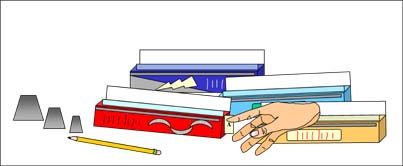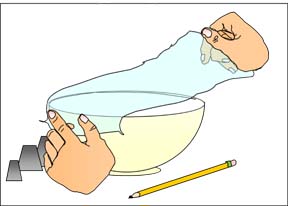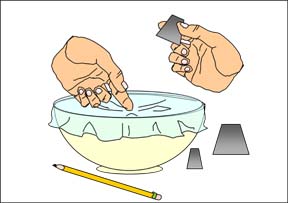 |
 |
|
|
|
|
Contributed by: Kentucky Department of Education (KDE) Description:Students compare the quality and price of different kinds of plastic kitchen wrap. Students do simple "tests" on each of 4 samples, record observations and do simple calculations. Then, the students must rank the four kinds of wrap from best to worst.This task is designed to take students approximately 45 minutes to complete.
Overall Task Content Area:
Specific Knowledge Areas:
Performance Expectations:
National Science Education Standards: 4 B PS 1: Properties of objects and materials: Grades
K-4 4 A SI 1: Ability to do scientific inquiry: Grades K-4
(Use the "hot" link on the PALS home page to check the full text of related National Science Education Standards, if desired.) National Council of Teachers of Mathematics:AL1: Understand patterns, relations and functions:Grades pre K-5 a. sort, classify, and order objects by size, number, and other properties. AL4: Analyze change in various contexts : DAP1: Formulate questions that can be
addressed with data and collect, organize, and display relevant
data to answer them: NO2: Understand meanings of operations and how they relate
to one another : PS2: Solve problems that arise in mathematics and in
other contexts: RP3: Develop and evaluate mathematical arguments and
proofs: CON3: Recognize and apply mathematics in contexts outside
of mathematics: REP3: Use representations to model and interpret physical,
social, and mathematical phenomena:
Students may work in groups of 4 for the experiment/activity part of this exercise, however each student in the group must fill-out their own Data Sheet. Students work together for up to 20 minutes. They are instructed to notify you when finished with the group work, and then to go on to the individual work beginning with question #1. If students are still working together 20 minutes after the testing begins, instruct them to cease their group work and begin individual work. At this point, they may no longer talk. Whether or not they are just beginning their individual work, remind students that they now have about 25 minutes to complete the individual activity. Students should be ready to work as soon as the period begins. Group assignments should be made in advance. The materials should be set out at each lab station, if possible. A central supply area, if needed, should be easily accessible. All supplies should be clearly labeled.
Each brand of plastic wrap should be labeled A, B, C, or D. Teacher: 1) Label boxes and set up student workstation.
Safety:
Extensions/modifications:
|


